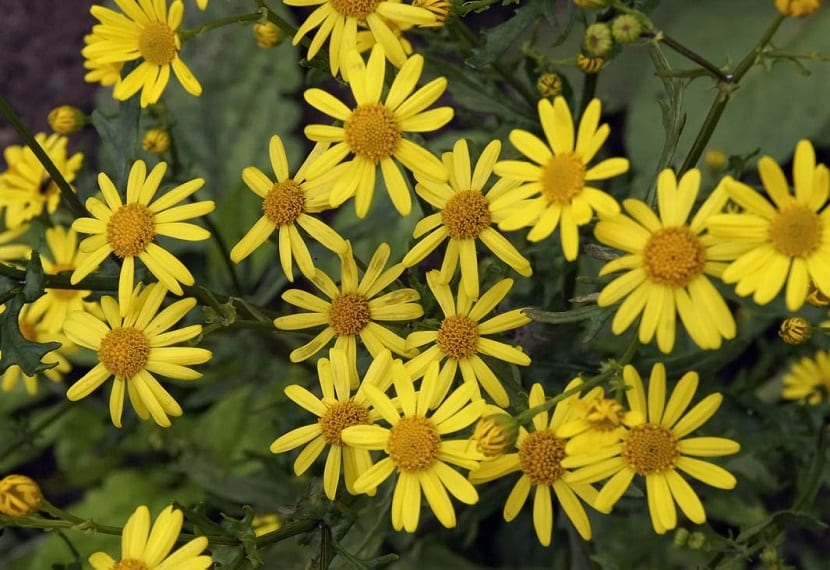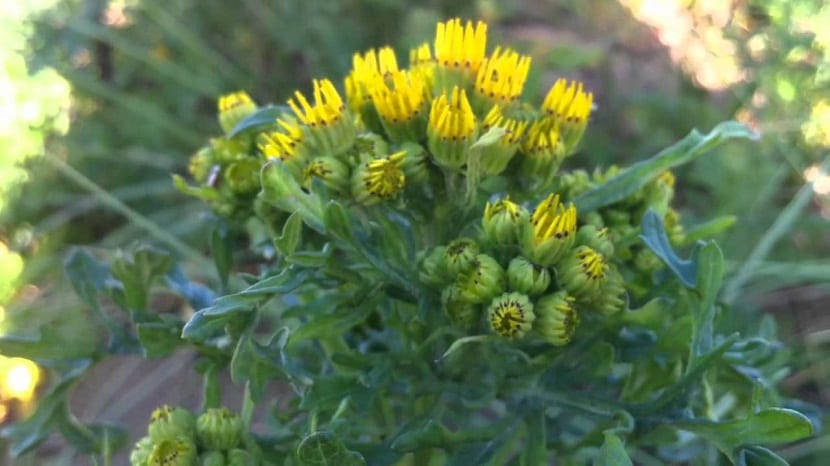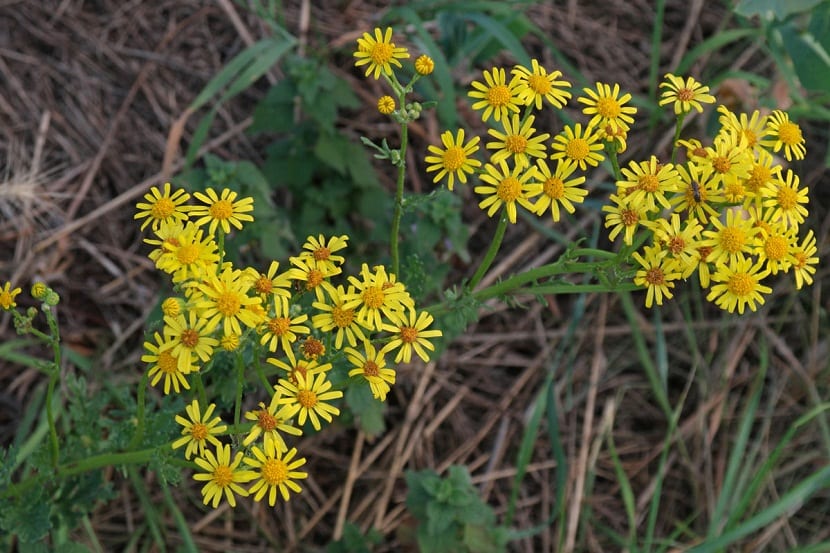
La Jacobea vulgaris is a flowering plantHerbaceous type, of the daisy family, that is to say of the Asteraceae family) commonly known in different ways according to the countries or regions as lily, ragwort, sacapeos, suzón or Hierba de Santiago.
Characteristics of the Jacobaea vulgaris

Santiago grass is a perennial or biennial plant and has a short and erect rhizome. Long stems grow from its shallow root that can reach up to 120 cm. The latter are woody at the base and branched at the top. They have a deep and sparsely hairy striatum. On the other hand, they have a reddish brown color.
At the top of the stems the flowers grow and always in the form of yellow chapters grouped forming flat corymbs. Its flowering period includes the months of July to September inclusive.
The plant has pinnatilobed gabra leaves, the lobes of which are serrated and very cleft. It can measure up to 80 cm (32 inches) and is usually no smaller than 30 cm (12 inches).
It grows frequently both on the edges of roads, in ballast tanks and in vacant lots, as well as in harbors, patios and prairies. It is not strange to find it, also on the embankments of the railways. Pollination is carried out thanks to the help of bees, flies, butterflies and moths and the quantity of seeds produced is usually very high.
The presence of alkaloids in its composition makes it a poisonous plant especially for animals and especially for livestock. It is assumed that, for its toxicity to act on humans, very high doses should be used. In any case, many professionals advise against it since the risks are high and its therapeutic effect has not yet been one hundred percent proven.
From
Its first specimens grew on the Eurasian continent. It is currently being developed in practically all of Europe (from Scandinavia to the Mediterranean). While in Spain it appears on the banks of water currents and in wet pastures, in Great Britain, New Zealand and Australia it is seen in a negative way, as a “weed”.
In the latter country there is even a law that prohibits its conservation within any land. In the US, its presence is noticeable in the north and west of the territory (more specifically in Idaho, Maine, California; Illinois, Montana, Michigan, New Jersey, Oregon, Pennsylvania, New York and Washington.
On the other hand in South America you can also find their presence, especially in Argentina where it is a very common growing herb. It also exists in the north of the African continent as well as in the countries India and Siberia, located in Asia.
Cultivation and Care
There is no possible advice on how to keep our Jacobaea vulgaris in optimal conditions, since Herb of Santiago is not cultivated, on the contrary, it is a wild herb and not everywhere is it considered a “weed”. For example, on the Isle of Man it was instituted as a national flower.
Uses

Although it is advisable to remember its potentially toxic nature (explained in the first section), some doctors prescribe it as hypoglycemic, venotonic, emmenagogue and antidysmenorrheic.
It is also recommended by some for varicose veins and some other types of circulatory problems. On the other hand, it can be said that it is especially useful for women as it accelerates the onset of menstruation and fights pain that are direct products of it.
Since the Middle Ages and until the middle of the XNUMXth century, the Herb of Santiago has been given multiple and varied external uses, such as combating eye inflammations, reducing pains and cancerous ulcers, against rheumatism, sciatica and gout. and, finally, for cases of bee stings.
Although it is not a proven hypothesis, scientists hope that the effect of pyrrolizidine alkaloids on Cell division can help slow or slow the growth of cancer cells.